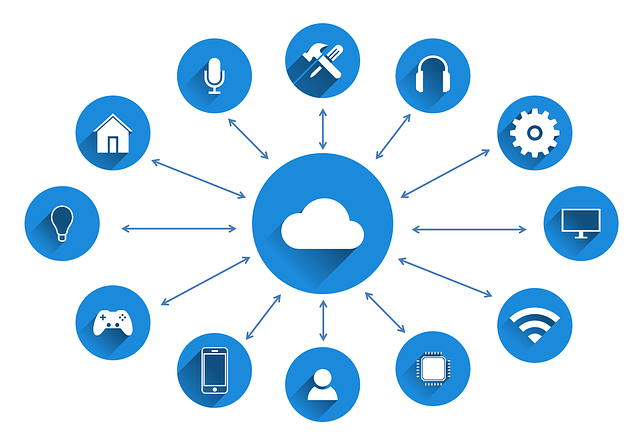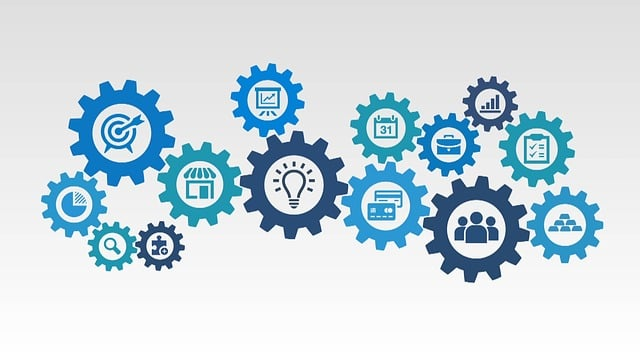Cloud FinOps (Cloud Financial Management) and CostOps (Cost Optimization) are two closely related practices becoming increasingly important for modern organizations. Data and technology have transformed how businesses approach financial accountability and cost management in today’s digital age. However, what is Cloud FinOps? and what is CostOps? FinOps and CostOps have emerged as critical strategies for staying competitive and maximizing profitability.
But what exactly are Cloud FinOps and CostOps, and how do they differ from traditional financial and cost management practices?

What is Cloud FinOps (Cloud Financial Management)?
According to Finops.org, “FinOps is shorthand for ‘Cloud Financial Operations ‘or ‘Cloud Financial Management ‘or ‘Cloud Cost Management. ‘It can be defined as optimizing financial performance by leveraging data and technology to make more informed financial decisions. This might involve setting financial goals, budgeting effectively, implementing cost-cutting measures, and monitoring financial performance to identify areas for improvement. FinOps is increasingly being used by organizations to drive business growth and innovation and improve efficiency and save money.
As The FinOps Foundation puts it, “[FinOps] is the practice of bringing financial accountability to the variable spend model of cloud, enabling distributed teams to make business trade-offs between speed, cost, and quality.”
What is CostOps?
CostOps, on the other hand, focuses specifically on identifying and implementing strategies to optimize resource allocation. This might involve analyzing data to identify opportunities for saving money, adopting new technologies or processes to improve efficiency, or outsourcing certain functions to cut costs. Like FinOps, CostOps aims to help organizations make more informed decisions about allocating resources to maximize profitability and stay competitive.
FinOps and CostOps represent a new financial and cost management approach driven by data and technology. By leveraging these practices, organizations can make more informed decisions about allocating resources, reducing cloud costs, and optimizing financial planning. Whether you’re a small business owner looking to streamline operations or a large corporation seeking to drive growth and innovation, FinOps and CostOps can help you achieve your financial accountability and cost management goals.
Cloud FinOps best practices:

Effective Cloud FinOps is about leveraging data and technology to optimize financial performance and make more informed financial decisions. But how do you get started with Cloud FinOps, and what should you follow?
Here are some tips to keep in mind as you begin implementing FinOps in your organization:
1. Understand your organization’s financial metrics and key performance indicators:
Before optimizing your financial performance, you need to know what you’re trying to optimize. This means identifying the financial metrics and key performance indicators (KPIs) that are most important to your organization and tracking them over time. Some common financial metrics include revenue, profit margin, return on investment (ROI), and cash flow.

2. Set financial goals and budget effectively:
Once you know what you’re trying to optimize, you can begin setting financial planning and developing a budget that aligns with those goals. This might involve setting targets for specific metrics, such as increasing revenue, improving profitability, or developing a long-term financial plan outlining how to allocate resources and achieve your goals over time.
3. Implement cost-cutting measures:
Reducing costs is often a key part of optimizing financial performance, and there are many strategies you can use to do so. Some common cost-cutting measures include automating processes, streamlining operations, and negotiating better supplier deals.
4. Monitor and report on financial performance:
Finally, it’s essential to track your financial performance over time and identify areas for improvement. This might involve using financial data and tools to monitor key metrics, identify trends, and make informed decisions about your organization’s future.

By following these steps, you can begin implementing effective Cloud FinOps practices in your organization and optimize your financial performance and decision-making.
With Cloud FinOps, organizations can thoroughly understand their cloud computing costs to optimize those costs, boost profits, and gain a competitive edge.
CostOps best practices:
CostOps identifies and implements strategies to reduce cloud costs and optimize resource allocation. By adopting CostOps practices, organizations can improve efficiency, boost profitability, and stay competitive in today’s business environment.
Here are some tips to keep in mind as you begin implementing CostOps in your organization:
1. Identify areas for cost optimization:

The first step in implementing CostOps is identifying areas where costs can be reduced. This might involve analyzing data to identify trends and patterns, benchmarking against peers, or conducting cost-benefit analyses to determine the potential impact of different cost-saving initiatives.
2. Implement cost-saving measures:

Once you’ve identified areas for cost optimization, it’s time to start implementing strategies to reduce costs. This might involve adopting new technologies or processes to improve efficiency, outsourcing certain functions, or optimizing supply chains.
3. Use cost analytics tools and techniques:
Data and analytics can be powerful tools for identifying opportunities for cost optimization. By leveraging cost analytics tools and techniques, you can better understand your organization’s costs, identify trends and patterns, and make more informed decisions about where to allocate resources.
4. Evaluate the effectiveness of cost-saving initiatives:
Finally, it’s essential to measure the impact of your cost-saving efforts and ensure that they deliver the desired results. This might involve setting benchmarks or targets for specific cost-saving initiatives and tracking progress over time to see if you are achieving your goals.
By following these steps, you can begin implementing effective CostOps practices in your organization and optimize costs.
FinOps and CostOps in the cloud:
The rise of cloud services has dramatically impacted how organizations approach financial and cost management. In the cloud, organizations have access to a vast array of tools and services that can help them optimize financial performance and reduce costs, making Cloud FinOps (Financial Operations) and CostOps (Cost Optimization) more critical than ever.
Here are some key considerations for implementing Cloud Financial Management in the cloud:
1. The unique challenges and opportunities of managing financial and cost performance in the cloud:
Cloud services introduce several unique challenges and opportunities regarding financial and cost management. On the one hand, the cloud can provide organizations with access to powerful tools and services that can help them optimize financial performance and reduce costs. On the other hand, the cloud can also present new challenges, such as the need to manage multiple vendors and billing systems and the risk of overspending on cloud resources.
2. Optimizing cloud spending:
To effectively manage financial and cost performance in the cloud, it’s important to adopt best practices for optimizing cloud spend. This might involve right-sizing cloud resources to ensure you are not paying for more than you need, negotiating better deals with cloud providers, and leveraging cost optimization tools and services.
3. Tools and services for managing cloud costs:
Many tools and services help organizations manage cloud costs and optimize financial performance. These might include cloud cost analytics platforms, cost management tools, and optimization services.
By keeping these considerations in mind, organizations can effectively implement Cloud FinOps and CostOps in the cloud and maximize the key benefits of cloud services while saving money.
Why is Cloud FinOps important in the new cloud economy?

FinOps is important in the new cloud economy for several reasons:
1. Better understand the dynamic financial environment:
The cloud allows organizations to scale up and down more easily, which means that financial performance can be more dynamic and harder to predict. FinOps can help organizations to better understand and manage this dynamic financial environment by using data and analytics to optimize financial performance and make more informed financial decisions.
2. Manage multiple vendors and billing systems:
The cloud introduces new challenges and opportunities regarding financial management, such as the need to manage multiple vendors and billing systems and the risk of overspending on cloud resources. FinOps can help organizations navigate these challenges and take advantage of the opportunities presented by the cloud by using tools and services to optimize cloud spend and improve financial performance.
3. Drive business growth:
The cloud can provide organizations with access to a vast array of tools and services that can help them optimize financial performance and reduce costs. FinOps can help organizations leverage these tools and services effectively for better decision-making to drive business growth and improve financial performance.
FinOps is essential in the new cloud economy because it allows organizations to optimize financial performance, reduce costs, and take advantage of the key benefits, unique opportunities, and challenges the cloud presents.
Who needs FinOps?
FinOps can improve the decision-making process for organizations of all sizes and industries. Still, it benefits organizations looking to improve their financial management practices and drive business growth.
Here are a few examples of organizations that may benefit from implementing FinOps:
1. Small businesses:

Small businesses often face unique financial challenges, such as limited resources and tight budgets. FinOps can help small businesses to optimize financial performance and reduce costs, which can help them to stay competitive and achieve their business goals.
2. Large corporations:

Cloud computing is a top operating expense (OpEx) for an increasing number of organizations—which means it’s essential for them to implement FinOps.
Large corporations often have complex financial operations and can benefit from the increased efficiency and improved decision-making that FinOps can provide. By implementing FinOps, an executive director at large corporations can optimize financial performance, reduce costs, and drive business growth.
3. Startups:

Startups often face significant financial challenges as they try to get off the ground and achieve profitability. FinOps can help startups to optimize financial performance, reduce costs, and make more informed financial decisions, which can help them to succeed in a competitive business environment.
4. Nonprofit organizations:
Nonprofit organizations often have limited resources and rely on donations and grants to fund their operations. FinOps can help nonprofit organizations to optimize financial performance, reduce costs, and make more informed financial decisions, which can help them to achieve their mission better and serve their constituents.
FinOps can benefit organizations of all sizes and industries looking to optimize financial performance, reduce costs, and make more informed financial decisions.
Conclusion:
In conclusion, What is FinOps? Simply put, the FinOps framework prescribes finance best practices for the cloud. It’s about optimizing cloud spend to get the most value for your company.
FinOps (cloud financial management) and CostOps are two closely related practices becoming increasingly important for modern organizations. By leveraging data and technology to optimize financial performance and reduce costs, organizations can improve efficiency, boost profitability, and stay competitive in today’s business environment. Whether you’re a small business owner looking to streamline operations or a large corporation seeking to drive growth and innovation, FinOps and CostOps can help you achieve your financial and cost management goals.
Implementing FinOps and CostOps involves identifying areas for improvement, setting financial goals and budgeting effectively, implementing cost-cutting measures, and using data and analytics to monitor financial performance and identify areas for improvement. By following best practices and leveraging the right tools and services, organizations can effectively implement FinOps and CostOps and start optimizing their financial and cost management practices.
